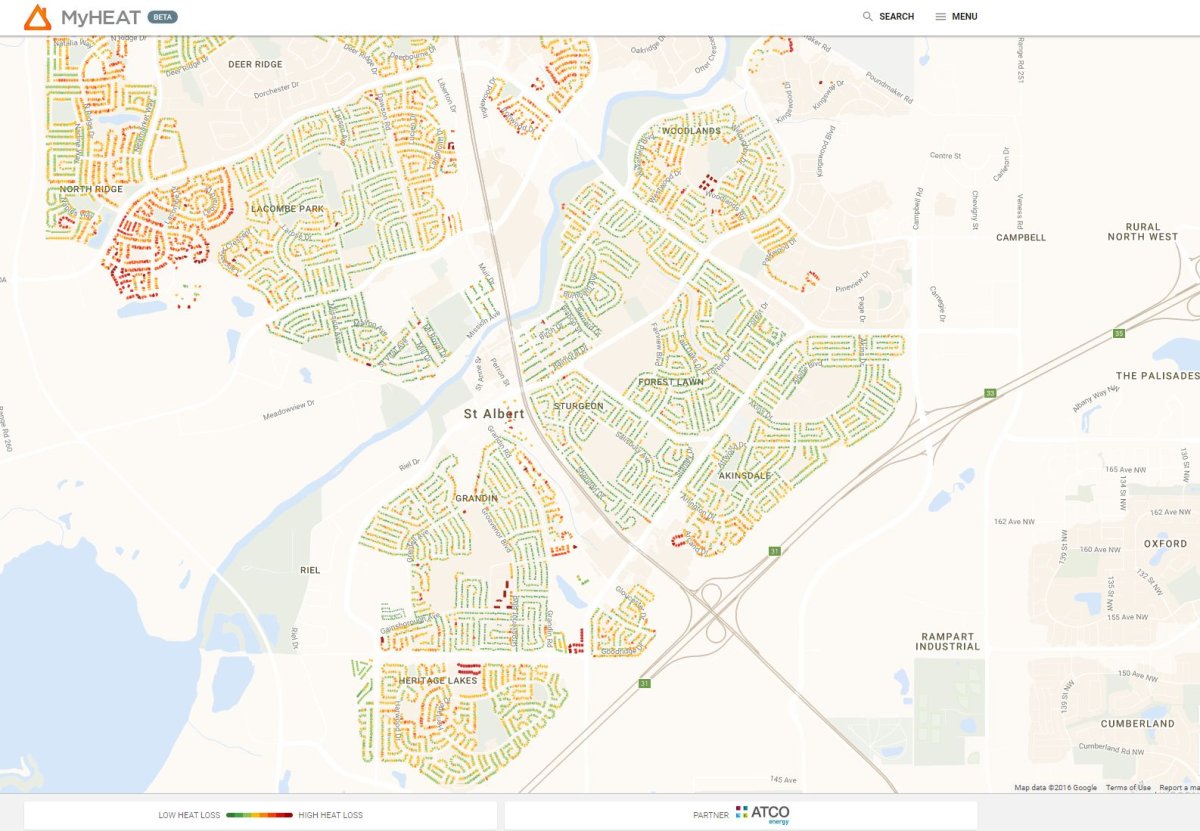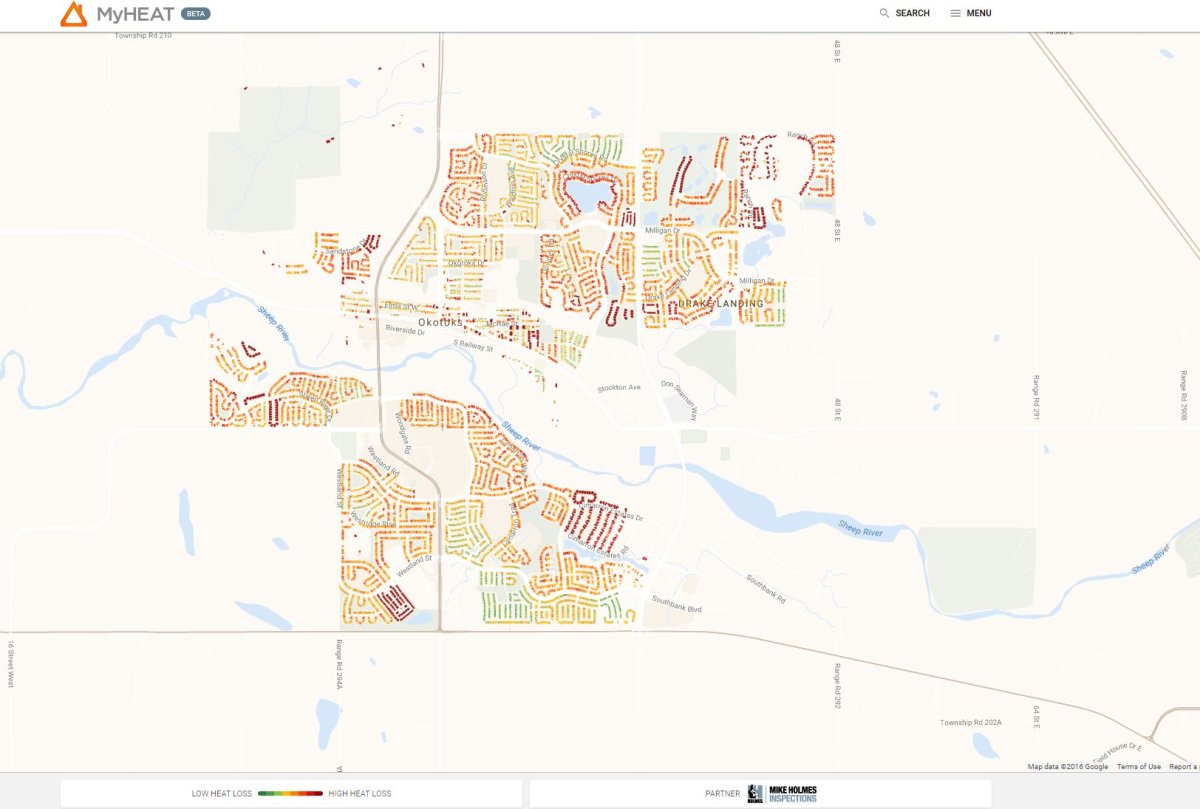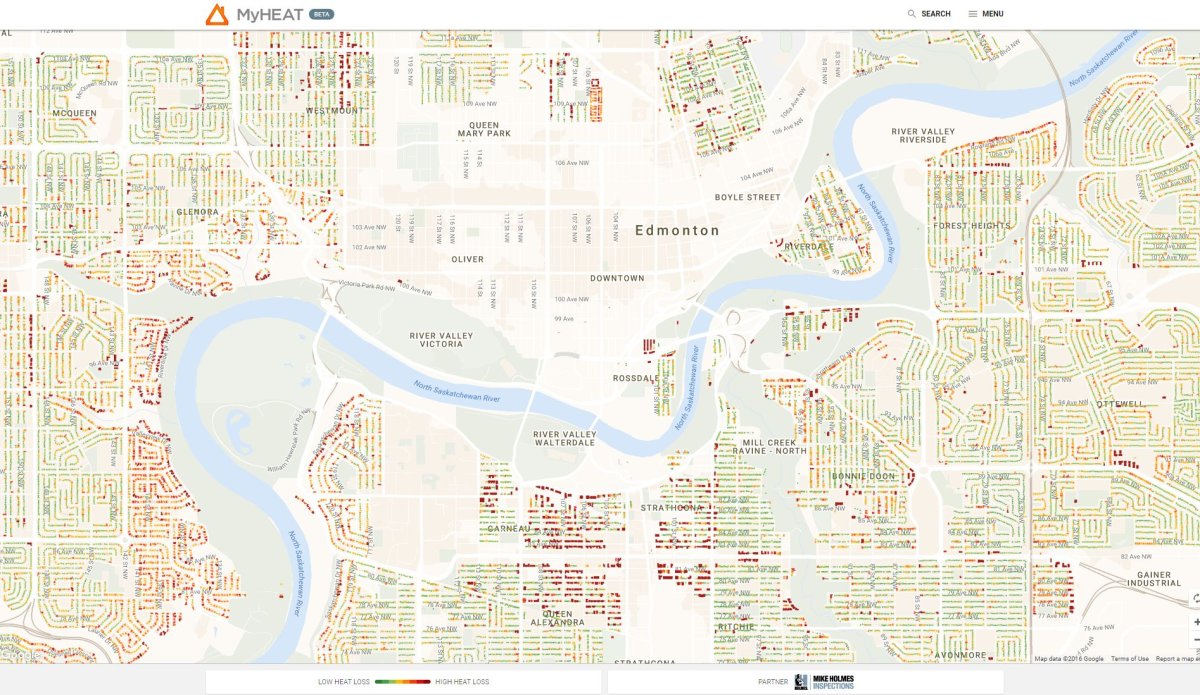Jeff Taylor calls heat loss “the invisible problem.” If you could see heat escaping from your house, you’d be more motivated to do something about it.

That was the idea behind MyHEAT.
Infrared cameras fly over a city in the middle of the night, street by street, to gather heat maps of each home.
“A super high-resolution thermal camera,” Taylor explained. “We mount it on the bottom of a turbo prop airplane and we fly back and forth across the city.”
READ MORE: How to know if your energy-efficient home will reduce your bills, environmental impact
The data for each home is extracted and standardized so that different homes and neighbourhoods can be compared. The information is posted in maps online, visually displaying how efficient – or not – each home is. You can even search for your exact address.
“It’s usually: ‘Wow, this is so cool! I didn’t know this,’ or, ‘I didn’t know I had heat leaking from here.'”
“Then as people dig deeper, they start asking questions,” Taylor said. “‘Why is this part of my house seem to be leaking more heat than this part?'”
The detail is so precise you can see which areas of your home are leaking heat. The most common offenders? Around doors and windows and through the attic.
“Windows and doors seem to be the biggest heat/cold loss of anything in the house,” home inspector Dan Merrell said. “And then of course, we found some missing insulation.”
READ MORE: Alberta adopts building code changes to reduce greenhouse gas emissions
Merrell was asked to inspect a home in St. Albert and used the MyHEAT thermal map as a guide.
“Some of the pot lights that were put in were not the proper lights to put into an attic space and they were leaking air into the attic space,” he explained.
Taylor co-founded the business with chief science officer (and University of Calgary professor) Geoff Hay.
They have two goals: to get people thinking about home efficiency and to help them take action.
“Our first goal is just to get people to look at their house,” Taylor said.
“There’s been a number of studies done that when a homeowner sees a thermal image of their house, they’re much more likely to take action. It’s really to start the conversation around home energy efficiency.”
READ MORE: 4 ways to make your home smarter
Anita Johnson’s home in St. Albert was given a Heat Score of five out of a possible 10. A lower score means that the house loses less energy, so her’s has moderate heat loss.
- McLean accuses Calgary third-party advertiser of ‘whipping votes’ in favour of rezoning bylaw
- Canadian curler Chelsea Carey says don’t compare me to Jennifer Jones
- Firefighters battle blaze at vacant house in northwest Calgary
- 7 sent to hospital after carbon monoxide poisoning incident in northwest Calgary
“I learned lots actually,” she said. “Some of the things I was expecting were totally spot on and then other things were very unexpected. Pot lights were probably at the top of the list.”
Johnson said, based on the heat map and the home inspection, she’s “definitely” going to make some changes.
“We already knew that the windows needed to be replaced, with it being an older home… but seeing some of these other things that came up and that they were smaller issues – a lot of heat was escaping but smaller things that you can do in order to fix it – those will be first on the list.”
When you click on the thermal image of your home, the website also suggests some ways to improve efficiency. There are small options – like adding weather stripping, caulking or additional insulation – and more major retrofits.
READ MORE: How will Alberta’s carbon tax impact consumers?
The experts agree even small changes will save energy and money down the road.
“There’s a big difference in utility costs between a home that has been tightened up, caulked up and sealed up compared to a home that hasn’t had that yet,” Merrell said.
In order to fund the project, MyHEAT received money from companies that sell home efficiency products and services (like Home Depot, Atco and Mike Holmes Inspections). While Taylor would love to see Albertans upgrading their homes, just making homeowners more aware is a great step.
“It’s really a conversation starter,” he said. “When we’re looking at the homeowner, that’s what we want to do: get them thinking and get them engaged around home energy efficiency.”
MyHEAT has already mapped the following cities:
Calgary
Edmonton
Sherwood Park
St Albert
Okotoks
Airdrie
It has collected data for the following cities:
ALBERTA
Red Deer
Cold Lake
Vegreville
Spruce Grove
Fort MacMurray
Fort Saskatchewan
Grande Prairie
Lethbridge
ONTARIO
Hamilton












Comments